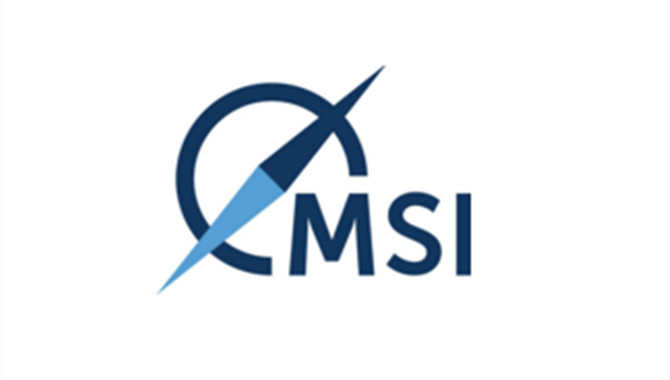
Latest MSI quarterly report points to decline in new gas fuel orders as Methanol and Ammonia options gather momentum and longer term risks are weighed
The recent run of newbuilding Capesize bulk carrier orders featuring dual-fuel LNG propulsion may have peaked, according to research and forecasting company Maritime Strategies International.
The fall-off in interest in LNG-fuelled ships represents concerns over their long term viability against tightening regulation and growth in availability of Ammonia and Methanol-ready dual fuel engines.
Concern over the shape of future low carbon regulations are partly to blame for muted dry bulk newbuilding orders during 2021, despite bulkers registering the highest average annual earnings since 2007/08. Contracts declined sharply over the second half of last year and have all but disappeared in 2022: for the year to March, just seven new dry bulk contracts have been reported.
One of the most notable trends from last year was a sharp uptick in LNG’s share of contracts – 31 of the 77 Capesize vessels ordered were dual-fuelled ships. Most of these were built on the back of long-term charter agreements between miners and shipowners, stretching over a period of between five and 10 years.
MSI’s Q1 Dry Bulk report* notes that there does now seem to be an emerging consensus on future fuels for shipping, converging on Ammonia or Methanol, which may have the effect of supressing contracting if a workable low carbon solution is deemed to be ‘just around the corner’. It suggests that the ordering of ships with dual-fuel LNG engines may have already peaked, as a commercial solution for ammonia and methanol fuels looks to be edging closer.
“Given the commitments by the major mining companies already in place, the recent spate of Capesize dual-fuel contracts may have already run its course,” says Alex-Stuart Grumbar, Dry Bulk Analyst, MSI. “Owners ordering dual-fuelled ships with an economic life of over 15 years will also be mindful of the expected market conditions towards the end of 2030s and the composition of the fleet. The question is how much will LNG-fuelled ships be penalised should a majority of the fleet by then be using non-fossil based zero-carbon fuels.”
Many of the early designs for ammonia as fuel have so far originated from Japan - Sumitomo Corporation in conjunction with Oshima Shipbuilding is developing an ammonia fuelled Kamsarmax bulker, with aim of taking first delivery by 2025. Another compelling solution has been proposed by Nippon Yusen Kaisha (NYK) and Elomatic Oy which have just completed the development of a concept designs for an LNG- fuelled but ammonia-ready post-Panamax bulk and are also aiming to construct the vessel by 2025.
The recent run of newbuilding Capesize bulk carrier orders featuring dual-fuel LNG propulsion may have peaked, according to research and forecasting company Maritime Strategies International.
The fall-off in interest in LNG-fuelled ships represents concerns over their long term viability against tightening regulation and growth in availability of Ammonia and Methanol-ready dual fuel engines.
Concern over the shape of future low carbon regulations are partly to blame for muted dry bulk newbuilding orders during 2021, despite bulkers registering the highest average annual earnings since 2007/08. Contracts declined sharply over the second half of last year and have all but disappeared in 2022: for the year to March, just seven new dry bulk contracts have been reported.
One of the most notable trends from last year was a sharp uptick in LNG’s share of contracts – 31 of the 77 Capesize vessels ordered were dual-fuelled ships. Most of these were built on the back of long-term charter agreements between miners and shipowners, stretching over a period of between five and 10 years.
MSI’s Q1 Dry Bulk report* notes that there does now seem to be an emerging consensus on future fuels for shipping, converging on Ammonia or Methanol, which may have the effect of supressing contracting if a workable low carbon solution is deemed to be ‘just around the corner’. It suggests that the ordering of ships with dual-fuel LNG engines may have already peaked, as a commercial solution for ammonia and methanol fuels looks to be edging closer.
“Given the commitments by the major mining companies already in place, the recent spate of Capesize dual-fuel contracts may have already run its course,” says Alex-Stuart Grumbar, Dry Bulk Analyst, MSI. “Owners ordering dual-fuelled ships with an economic life of over 15 years will also be mindful of the expected market conditions towards the end of 2030s and the composition of the fleet. The question is how much will LNG-fuelled ships be penalised should a majority of the fleet by then be using non-fossil based zero-carbon fuels.”
Many of the early designs for ammonia as fuel have so far originated from Japan - Sumitomo Corporation in conjunction with Oshima Shipbuilding is developing an ammonia fuelled Kamsarmax bulker, with aim of taking first delivery by 2025. Another compelling solution has been proposed by Nippon Yusen Kaisha (NYK) and Elomatic Oy which have just completed the development of a concept designs for an LNG- fuelled but ammonia-ready post-Panamax bulk and are also aiming to construct the vessel by 2025.
The opinions expressed herein are the author's and not necessarily those of The Xinde Marine News.
Please Contact Us at:







